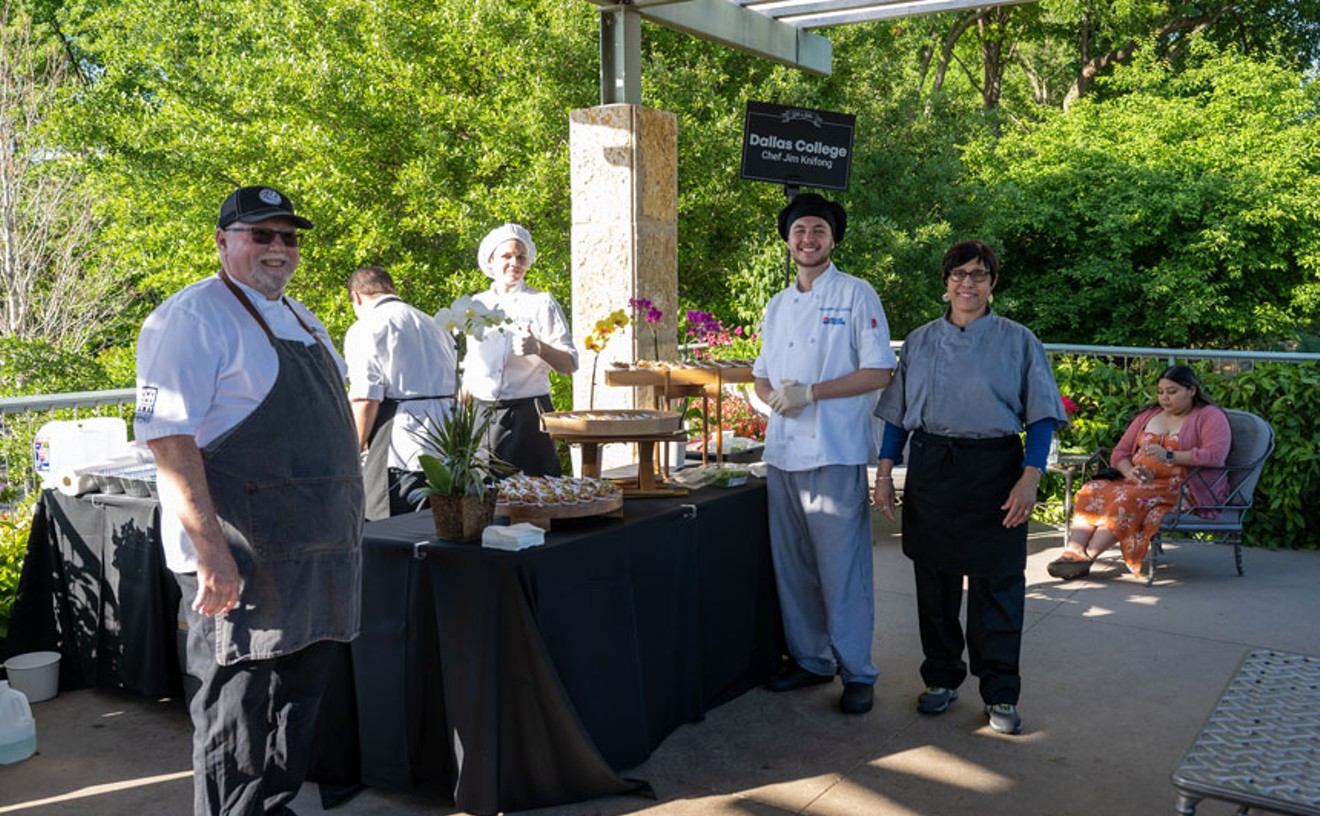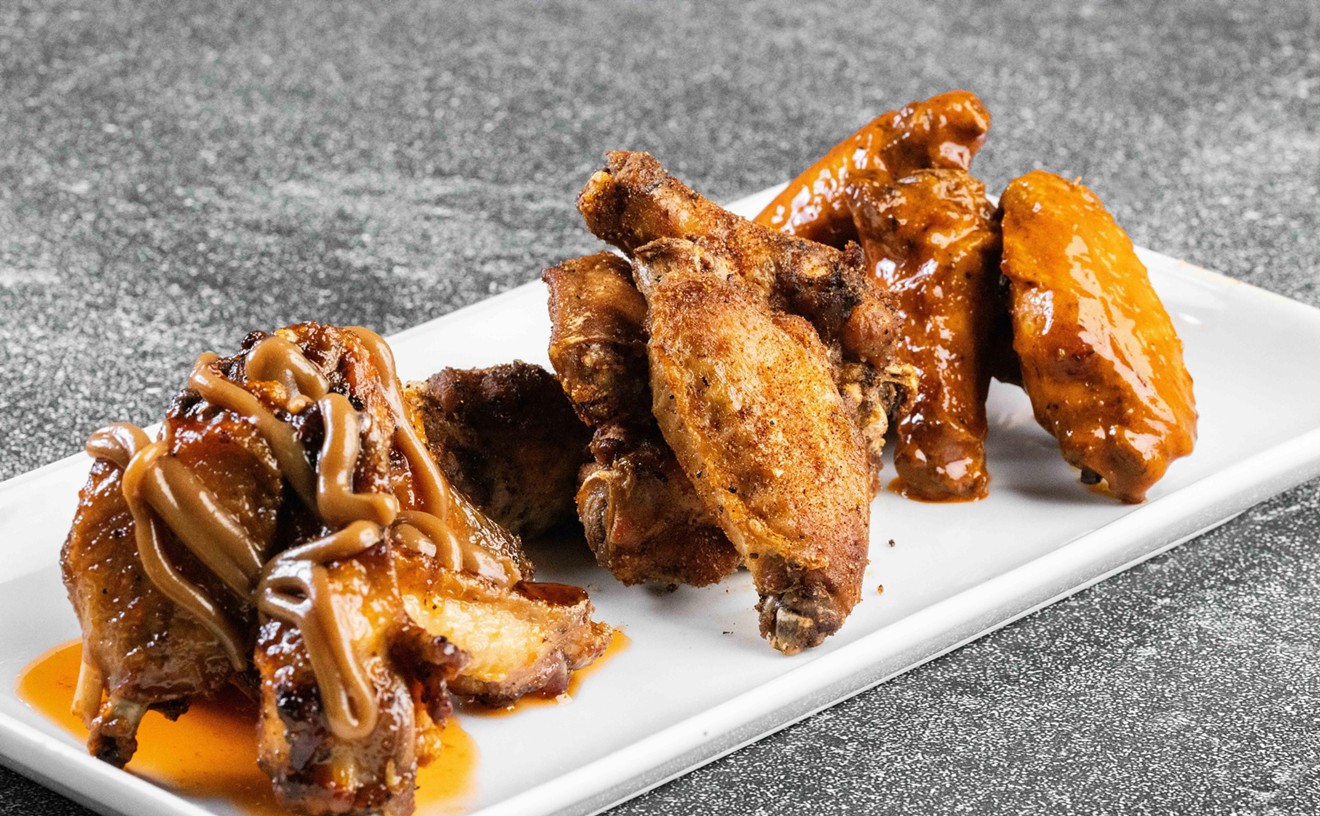Coming in, sitting down, scanning the menu, ordering, waiting, eating and finally, satisfactorily patting our bellies while saying "wasn't that good" before going home. This is the order of things, the way we eat out. It is a complacent activity by design. Often, the joy we take in having a meal at a restaurant is preceded by a reluctance to do work. We don't want to cook, and we certainly don't want to clean up after ourselves. Thus, the luxury of being served dinner by someone else -- usually someone we don't see, or think about -- forever appeals.
Sitting at the bar that faces the open kitchen of Ramen Hakata, one is reminded of just how much work it takes to make dinner out so easy, and so passive, for restaurant-goers. The galley-style kitchen is just big enough for four or five cooks and the occasional waiter bearing clean dishes. Any more staff and the rapid, fluid movements of the workers would be stalled.
The fervor of the staff on a Friday night, less than two weeks after the ramen house opened on Belt Line in Addison, is mesmerizing. One cook pops parboiled noodles, pre-portioned and shaped into balls the size of fists, into elongated mesh baskets before lowering them into the bubbling, boiling waters below. Another cook slings bowls onto a cart in front of the industrial range. The range is cranked to full-blast, its burners obscured under huge, stainless steel pots. Each pot contains broth and is burbling away, steaming the air with the heady scent of meat bones. He works quickly to fill the bowls, not minding when broth is lost to the floor or the range as he passes each ladle-full through a fine mesh sieve.
Someone else grabs the bowls, freshly brothed, sets some noodles in them and places them on the work surface that occupies the other side of the bar. The bowls are lost from view at this point, though the cook in charge of them is not. He looks down as he goes up the line, placing slices of chashu (pork belly), half a boiled egg and scallions in the bowls. He glances up, only to consult the orders that stream, seemingly endlessly, from an automated machine screwed to the ceiling. This bowl gets garlic, this one should be spicy, this one without corn -- the orders dictate the cook's movements as he grabs and arranges and assembles each bowl of ramen into a steaming thing of glory.
No sooner are they given their final accoutrement than a waiter whisks the bowls away to their respective tables. The culmination of the kitchen's collective effort is evaluated by diners, not through approving nods or discourse, but through the sound of silence, broken only by slurping.
There are five different ways to order ramen and two different broth bases -- miso or "special" -- which means there is a total of 10 combinations to choose from. The differences amount to things like whether you want extra chashu or garlic flakes, but at their core the ramen dishes adhere largely to the same delicious formula. Prices range from $8 a bowl for the basic Hakata Ramen ("pork based broth with special sauce, chashu, soft-boiled egg, green onion, black mushroom, bean sprouts, fragrant garlic oil") to $10 for the Chashu Miso Ramen ("pork based broth with special miso sauce, extra chashu, soft-boiled egg, green onion, black mushroom, bean sprouts, corn, fragrant garlic oil.") The bowls are proportioned just right for one normal human being. Should you have the same stomach capacity as a certain first-look food writer, it is recommended that your dining companion not be too hungry or immune to sharing.
The menu also offers something to whet the appetite, including edamame ($3), gyoza ($4), chashu buns ($5 - an interpretation of the steamed pork buns popularized by David Chang) and takoyaki ($5 - fried octopus balls - think hush puppies hit with the Japanese stick.)
The space is small and bustles with energy. Clean, modern design with lots of wood helps lend a sense of order to what could otherwise seem like a chaotic environment on a busy evening. Camaraderie is encouraged but regulated, with table-top dividers separating different parties seated at one long table. If possible, sit at the bar. Watching the ramen come to fruition turns eating-out into dinner and a show. Expect a wait on a weekend, both for the table and for the food, but know that your patience will be rewarded in the end. After all, it's not like you're going to have to do the dishes afterward.










